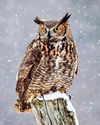Shoot the Milky Way
Digital Camera World
|July 2021
Just one of many projects to feature in a new guide to astrophotography by Adam Woodworth

The Milky Way is by far the most common night sky subject used in landscape astrophotography, and for good reason. The Galactic Core of the Milky Way is very big and bright. It will show up quite prominently, even in ultra-wide-angle lenses.
The rest of the Milky Way that arcs through the sky is also quite bright and makes a great subject for panoramas. There’s quite a bit of colour in the Milky Way from the stars and nebulae scattered throughout it, and the Galactic Core has an interesting texture caused by dust clouds that block light, creating dark areas – including the ‘Dark Horse’, so named because if you look at it from the right angle, it looks like the silhouette of a horse. The Galactic Core is sort of loosely used to mean the bright thick ‘bulge’ around the centre. It is this area that features in most Milky Way photos.

Even when the big, bright Galactic Core is not visible, the part of the Milky Way that is visible can still be used as an interesting subject. It’s fainter and has less dramatic punch, but it’s still beautiful.
The Milky Way works well with most focal lengths, from ultra-wide fisheye lenses to 24mm, 50mm, and even beyond. A longer focal length will isolate more of the Milky Way against your foreground subject, making the Milky Way appear very large. Night Sky Photography by Adam Woodworth, £24.99/$29.99. www.ilexinstant.com

このストーリーは、Digital Camera World の July 2021 版からのものです。
Magzter GOLD を購読すると、厳選された何千ものプレミアム記事や、10,000 以上の雑誌や新聞にアクセスできます。
すでに購読者ですか? サインイン
Digital Camera World からのその他のストーリー

Digital Camera UK
Fujifilm X-E5
This could be the best camera yet in the brand's X-E line
6 mins
January 2026

Digital Camera UK
Get to grips with Gradient Maps
Discover new ways of colour toning your images in Photoshop, with Wendy Evans
1 mins
January 2026

Digital Camera UK
Gritty urban edits
Sean McCormack explains how to boost your cityscape shots with Lightroom tools
2 mins
January 2026

Digital Camera UK
Affinity
Free (in-app purchases apply) Affinity Photo, Designer and Publisher rolled into a single app
4 mins
January 2026

Digital Camera UK
Mike Taylor
The award-winning photographer has just published a book about how to succeed in the medium.
7 mins
January 2026

Digital Camera UK
Hotshots
The winners of 'Power', the 14th season of the Hamdan bin Mohammed bin Rashid Al Maktoum International Photography Award (HIPA)
2 mins
January 2026

Digital Camera UK
Let's make a movie
Your digital camera is ideal for creating stop-motion animation as Wendy Evans explains
2 mins
January 2026

Digital Camera UK
Make your Golden Hour shots pop
Give your sunrise and sunset shots a stylish blast of effects in Photoshop to enhance those colourful skies
2 mins
January 2026

Digital Camera UK
Street challenge
Send us your best shots of unposed life on the street
1 mins
January 2026

Digital Camera UK
Capture a winter owl
Don't let snowy conditions put you off. Here's how to capture these magnificent birds
2 mins
January 2026
Translate
Change font size

